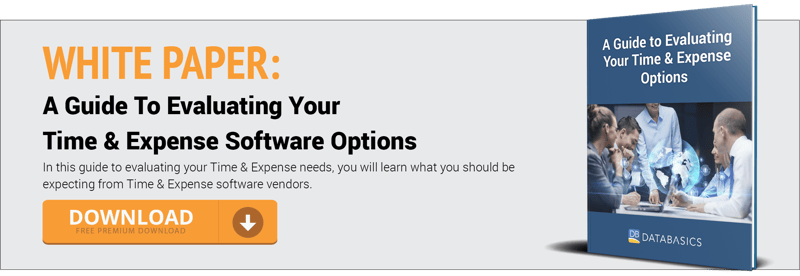
Artificial Intelligence in HR: Can It Actually Be Helpful?
With news of Apple’s doubled-down attempt to enter the AI (artificial intelligence) arena, trying to find practical applications for AI in other industries is becoming a priority. In HR, for example, there are plenty of applications for not only AI, but also for automation that will ease up the workload when it comes to tasks like recruiting, onboarding, and employee retainment.
Artificial Intelligence and HR: Working Together
Despite the fact that AI in HR sounds almost oxymoronic since artificial intelligence is, after all, artificial whereas human resources are supposed to be the opposite of artificial (as in real, human). The truth is that AI and automation are replacing some HR tasks, but it shouldn’t replace them all. The human in human resources will always be necessary because artificial intelligence may be able to find solutions to problems, but it cannot solve those problems with empathy or with emotional intelligence.
AI and automation are replacing
some HR tasks, but it shouldn’t
replace them all.
For example, one way that AI might be useful is in the use of sentiment analysis, which will read emails (and even Slack) to assist HR in predicting and solving problems. The end goal is for HR to see what employees are concerned about when it comes to the workplace. Perhaps the sentiment analysis finds that employees are chatting about how stringent the dress code is becoming. If an employee is uncomfortable in their workspace, they are more likely to leave to find a more comfortable workspace. This is a problem that HR can bring to management and a conversation can emerge about the goals of the dress code and whether that dress code can be opened up (within reason) to solve this problem.
Simply using A.I.
isn’t enough if HR
has no power to
solve problems.
Of course, HR cannot easily solve any problem that comes up in sentiment analysis. Simply using the technology isn’t enough if HR has no power or room to solve problems. HR leaders have to actually act on those problems.
There’s also power in simply acknowledging that a problem exists. Sometimes employees just want to be heard, so it can be enough sometimes to know that someone in the company cares enough to listen to problems. Sometimes, employees just don’t feel comfortable reaching out to HR with a problem, so being able to predict problems and bring in employees to have conversations about those problems can have an important effect on employee morale. Even in this situation, the machine is unable to respond to the problem; humans need to intervene with their real and emotional intelligence to find solutions. It’s one thing to identify a problem. It’s another thing to act on it.
A larger concern comes into play here with data collection. After all, the machine needs to read something in order to analyze it. Since email data is already being collected by most companies, it makes sense to analyze that. But, employees are probably going to be more reserved on email than they are on other forms of communication, like Twitter or Slack or whatever new tool comes out. What about monitoring an employee’s personal Twitter or Facebook account (especially if they’re open to the public) to get a "real" reading of the employee's thoughts on their job? At this point, it begins to feel that AI becomes intrusive, even if it is for a higher cause of increasing employee happiness and solving problems.
What happened to old-fashioned
listening and paying attention
and asking for feedback?
Then again, at what point could HR overly rely on the machines to identify problems. Could HR accomplish the same job without the machine snooping on social media or email? What happened to old-fashioned listening and paying attention and asking for feedback?
A solution without data collection could be asking employees to take some time for reflection through a survey or through daily or weekly “exit tickets” could give employees the space to consider their concerns and voice them to HR. Some companies may already have a form of this kind of communication, but a process like this needs to be done on a regular basis and should thoughtfully executed for a purpose that is clear to employees in terms of professional development and in terms of it being taken seriously by HR and management.
But, because AI is new and exciting and its possibilities are still trying to be understood, some HR professionals are suggesting other uses for AI that might not ultimately be useful. An analysis of employee calendars can show who met with whom most often and what they accomplished. Or, AI can show who the influencers are on social media or even in person. The information for information’s sake can be dangerous. If there’s a practical information for this data, then it might be worth integrating AI. Simply having data because you can have it is useless if you can’t act on it or if there’s no practical application for it.
Related Article: The 40-Hour Workweek's Death Is Changing How People Get Paid
What are some useful (and practical) applications for AI in HR? In general, any machine that can reduce the already heavy workload off of HR so that they can focus on higher value tasks is one worth investing in. Some helpful uses for AI might be:
-
Chatboxes for Employees
A chatbot that answers frequently asked questions for employees can reduce the number of emails in HR’s inbox. Providing answers about paid holidays and details on benefits would provide a window between HR and the employee, who might otherwise go without an answer to a question because they’d rather not bother HR (or because they don't know to contact HR at all).
However, there are tools that don’t involve AI that can also answer questions about topics like leave with automated leave management software. Then, if a question comes up frequently, that question can be answered more clearly in the employee manual or perhaps that policy needs to be reconsidered at a higher level. This chatbot can also access sentiment and direct the employee to the appropriate HR person, who can see the conversation for context of the problem. -
AI As A Source of Quick Info for HR Professionals
For example, travel app Lola uses AI not within the actual app, but as a resource for the humans assisting travelers. The machine does large-scale searches for information quickly and in a useful way so that the humans can be effective sources of information for travelers. The same could be applied to human resources professionals who might not know every detail of every possible benefits plan. According to Lola founder Paul English, “There are things that humans can do that AIs will never be able to do, in terms of having compassion for travelers, really understanding the motivation for your trip, what’s stressing you out…The [AI] is not exposed to travelers yet because it’s not good enough yet.”
To translate this to the everyday company’s situation, an employee might have a major problem that a machine might be able to use to provide information about how to solve, but a human is still necessary to implement that solution. A real-life person can empathize with the real-life problems of a fellow human and can react appropriately. That’s the major lesson companies can definitely take to heart, whether now or in the future: companies should be for and made up of humans. Companies that put humans (employees and customers) first will last.
“There are things that
humans can do
that AIs will never
be able to do." -
Recruiter Bots Can Get (And Keep) The Best Candidates
Not only can the system scan resumes to narrow down pools of hundreds of candidates, but it can also prevent any accidental (or non-accidental) biases of candidates, leaving only those who will best do the job. Machines can also automatically engage candidates with details about the hiring process (like trackable shipping updates from UPS). The challenge is avoiding the semblance of being impersonal in the eyes of the candidate. Then again, any contact is better than no contact. HR will still need to check in, though they won’t need to do so as often since the machine will be doing some of that work.
What makes AI in HR exciting is that if the tasks that drag down HR’s productivity are replaced by automation and machines, HR professionals can concentrate on working with other humans: keeping employees happy, healthy, and productive. Whatever it takes to free up HR resources is a win for the whole company. The challenge is for HR and AI to work together rather than expecting AI to take over. Putting people first will make the company last. Any effort to support putting people first is worth getting excited about.
For more information on the DATABASICS Time & Expense solutions, contact us, or call (800) 599-0434.
DATABASICS provides cloud-based, next generation Expense Reporting, P-Card Management, Timesheet Management, Leave Management, and Invoice Processing automation. Specializing in meeting the most rigorous requirements, DATABASICS offers the highest level of service to its customers around the world.
DATABASICS is relied upon by leading organizations representing all the major sectors of the global economy: financial services, healthcare, manufacturing, research, retail, engineering, nonprofits/NGOs, technology, federal contractors, and other sectors.
Connect with DATABASICS: LinkedIn, Twitter, and YouTube. DATABASICS is headquartered in Reston, VA.
Subscribe to our blog
Recent Posts
Posts by Topics
- Expense Management Software (125)
- DATABASICS (69)
- Time Tracking Software (45)
- Leave Management System (26)
- P-Cards (9)
- Home Healthcare (8)
- Government Contractors (7)
- Nonprofit Organizations (7)
- International Development (6)
- Receipt Management (6)
- Advanced OCR (2)
- CROs (2)
- Staffing Agencies (2)
- Vendor Invoice Management (2)
- Audit Management Software (1)
- Construction (1)
- Field Service Management (1)
- Integration (1)
- Microsoft Dynamics (1)
- Oracle NetSuite (1)
- Partnerships (1)
- Professional Services (1)
Read on

DATABASICS In Review: 2025's Top Innovations & Most Popular Content
Read Now
Time & Expense Year-End Preparation & New Year Kickoff To-Do List
Read Now
Combating AI-Generated Receipt Fraud with Spend Control
Read NowIRS Mileage Rate 2026 Predictions: Trends, History, EV Costs, and How Companies...
Read Now
DATABASICS Wins Silver In Best In Biz Awards 2025: Celebrating Excellence In...
Read Now
Why DATABASICS Time & Expense Is Becoming the Central Hub for Enterprise ERP,...
Read Now
Subscribe to Our Blog
Subscribe to our blog and get the latest in time tracking and expense reporting news and updates.
